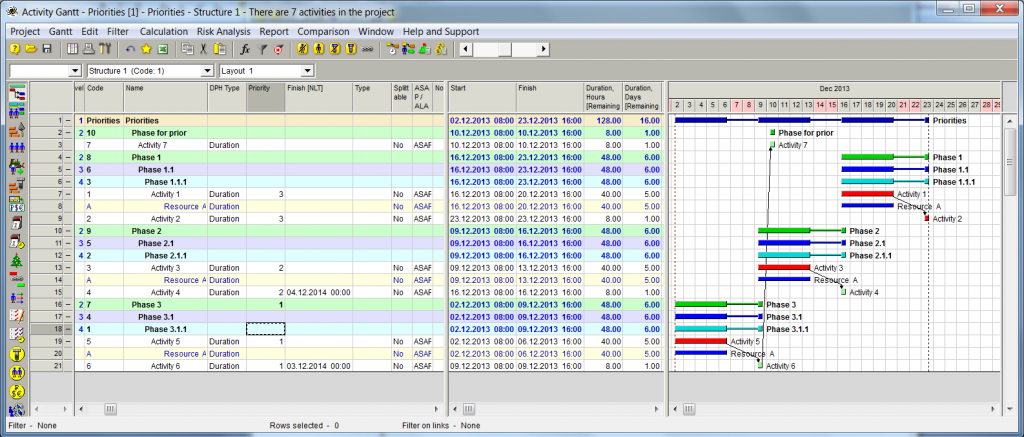Hi,
I was playing with priorities and found the following effect, which I can’t logically explain.
Just wondering whether it “works as designed” and id "yes", then what is the reason for it?
Effect description
Rule 1. Any activity, which has in it’s successor’s chain an activity with NLT restriction, always has a higher priority, than activity, which has no NLT restriction in it’s successor’s chain, regardless of it’s priority or priority of the phases above it. This is even in the situation, when NLT restriction is far enough not to be taken into account.
Rule 2. Out of 2 activities, both of which have NLT restriction in their successor’s chain, the activity where NLT restriction is set to earlier date has a higher priority regardless of it’s priority or priority of the phases above it.. This is even in the situation, when NLT restriction is far enough not to be taken into account.
In the example below one can see, that following activity priorities Phase 1 shall have highest priority, Phase 2 middle, and Phase 3 lowest.
But because Phase 1 does not have NLT constraint, in reality it has lowest priority.
Out of Phase 2 and Phase 3, Phase 3 has the earliest NLT constant date (even though it is still 1 year from the now), therefore it gets higher priority, than Phase 2.
The SpiderProject file is available in the Google Drive link below
https://docs.google.com/file/d/0B1FBt_G3gCVqaS1jRHNjOHk4bFE/edit







Replies